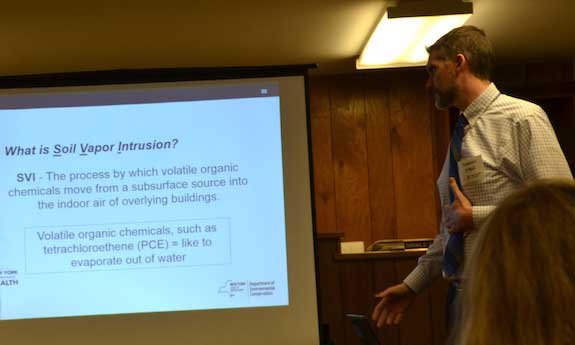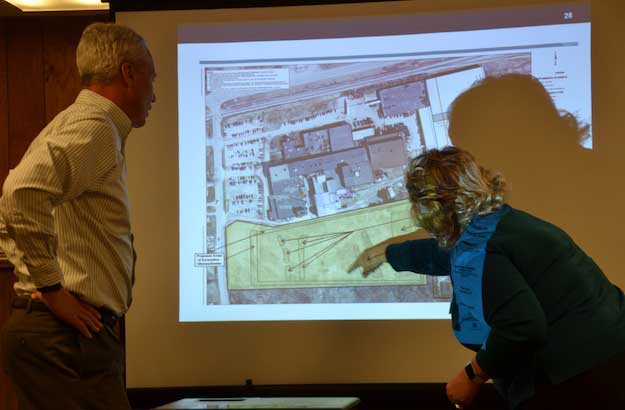DEC has plan, but no money for cleanup in Medina at former Abex
MEDINA – The state Department of Environmental Conservation said it was a significant milestone to have an accepted remediation plan for 9.5 acres of vacant land that was contaminated by the manufacturing processes at the former Abex, at the corner of Bates Road and Route 31.
The DEC did soil borings, well water samples and other tests on the land and developed a cleanup plan.
The DEC is proposing excavating and hauling away 5,700 cubic yards of soil to a permitted landfill. The plan calls for bringing in a foot of cover over the 9.5 acres which could be soil, crusher-run or recycled concrete. If pavement is installed or some other impervious cover, less than a foot of cover material may be accepted, the DEC said.
The estimated cleanup is about $5 million. The DEC doesn’t have that budgeted. The agency would be willing to work with developers if private funds paid for the cleanup. There would be tax credits available for a developer for working on a brownfield site, the DEC said.
The DEC also would be open to allowing sections of the site be remediated, rather than the entire 9.5 acres at once, DEC leaders said during an informational meeting on Wednesday evening at the Ridgeway Town Hall.
“I think we could do it in pieces,” Charlotte Theobald, an environmental engineer with the DEC, said during the meeting.
The site is next to the current Brunner, which has done several expansions at the former plant. The 9.5 acres is just east of the plant in a wooded area.
Jim Whipple, chief executive officer of the Orleans Economic Development Agency, thanked the DEC for doing the cleanup study and plan. The project has been in the works for more than a decade.
Whipple said the land is an asset, with potential for a parking lot of perhaps a storage warehouse.
The site’s contamination doesn’t pose a high-priority threat to warrant Superfund dollars, the DEC said. That means the cleanup costs will likely be borne by a developer with perhaps help from a local government.

Eamonn O’Neil from the State Department of Health said the cleanup plan meets the standards for protecting public health.
Theobald of the DEC went over the site history during the meeting on Wednesday.
The former Abex foundry was constructed in the early 1950s. Prior to development the parcels were undeveloped woodland and tilled farmland. Lagoons were used to collect wash water from the foundry process as well as storm water discharge.
The former foundry and manufacturing facility used foundry sands for the casting of metal parts. Foundry sands and waste have been identified across the site and within the settling lagoons. Settled foundry sands in the lagoons was reclaimed for reuse at the former foundry facility by staging adjacent to lagoons or were collected for disposal.
Several Phase I and Phase II Environmental Site Assessments were conducted on the site and the adjoining Brunner parcel from 1990 to 2008, the DEC said. The Phase I and Phase II Environmental Site Assessments indicated the disposal of remaining foundry sand inventory on site, accumulation of sediment in two of the lagoons, reclaimed foundry sand was staged near the lagoons, and total petroleum hydrocarbons (TPH) concentrations in foundry sand disposal area exceeded state standards and guidance values.
The DEC is accepting written comments about the proposed remedial action plan for 45 days, from Feb. 2 through March 19. For more information, click here.








































































